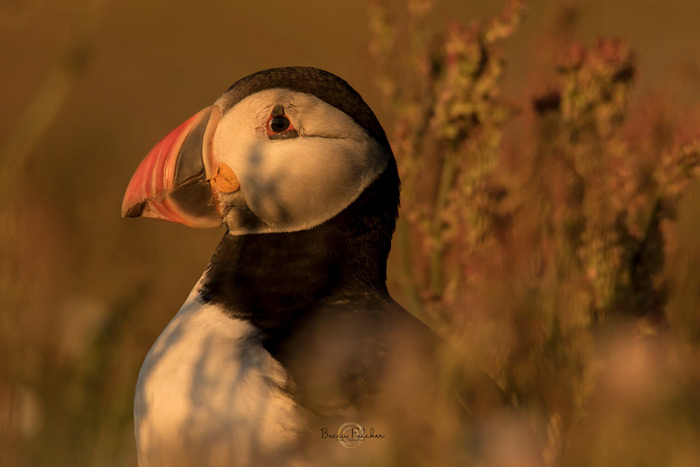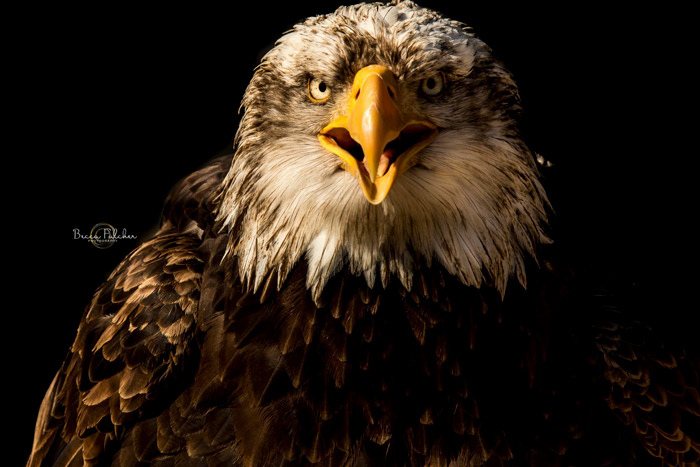Passion and inspiration along with motivation have laid the groundwork for photographer Becca Fulcher’s pursuit of capturing stunning images of nature and wildlife. Although Becca resides in the city of Milton Keyes in England, which has limited countryside, she is still able to photograph the range of wildlife that is accessible to her. She has found that her current limitation has given her an excuse to find more inspiration elsewhere. Much of her work brings her to exciting destinations farther away from home. Through her challenges and fresh approach to photography, Becca has the ability to successfully capture and convey her passion for the natural world.
Thank you, Becca, for spending the time to share your experiences with us and thank you so much for all your thoughtful responses. Your body of work is truly inspiring.
If you would like to learn more about Becca, you can follow her on Facebook and Instagram.
Can you please tell our readers a bit about yourself?
I’m a 45-year-old female who spends a lot of time with her husband with camera in tow. Two crazy moggies and a full-time job as an Administrator. I love the outdoors and find it a way of dealing with any stress points in life and to relax.
Where do you call home?
Milton Keynes, England.
I see that you’ve built up an extensive collection of wonderful photography. What is it that led you towards this field and how long have you been working in it?
I started photography when I was 15 and my Gramps bought me a Pratica camera. 30 years ago photography was a challenging experience as these were the days of film so there was no checking the back of the camera to see whether you had achieved the image you wanted, instead, it was a painful wait getting the film rolls developed not knowing what would return. It was a much longer learning curve but a great introduction to the basics of photography. I then put the camera down for quite a few years and then my husband encouraged me to pick it back up about 8 years ago and I feel I have developed even more in this time. Now I have an incredible passion for wildlife photography and conservation which I never did when I started photography and I think it shows in the images I create.

How did you go about learning photography? Are you self-taught or formally-taught? Where have you found the majority of information you use today? (online, in person, mentor, college, etc…)?
Completely self-taught – I used to spend a lot of time when I was younger reading books and going to the library as there was no internet access then. Sometimes it was a case of “try and see” and learning through your own mistakes.
What do you think is the most challenging aspect of photographing nature and wildlife?
The wildlife itself!! There are so many times that you sit and wait patiently for hours for nothing to show, or there is a sudden opportunity and you grab your camera and take the shot…there wasn’t time to check the settings and “oh dear what is that!”
Wildlife is a challenge at so many times but then the rewards it does offer can be heartwarming and heart wrenching at the same time and there have been some moments that will remain with me for the rest of my life. Seeing wildlife so close means having to appreciate the stark reality at times and not intervening no matter what goes through your mind – an example of this was standing by and watching a heron trying to steal ducklings. Luckily the heron didn’t succeed but this is nature and it is unfair to step in at any time but it is also hard to accept.
What would you say your most remarkable wildlife encounter has been?
Every experience is remarkable for me – I love to appreciate what I have achieved during that time and what I have learnt about the animal or the behaviour. If there is anyone experience that does stand out it was spending time with the Atlantic Grey Seals and one particular pup that we named Pinhead. After a couple of days, we noticed that mum was rejecting the little pup and he was getting further and further away from her crying out for milk. Sadly he never survived and one morning we found him “sleeping”….that really brought home the harshness of reality that day.
How do you go about deciding on where your next photo shoot is going to be?
I’m quite an organised person and have a wildlife calendar at home that I have developed. The calendar covers the different seasons and what I want to photograph annually – there is a wide variety within this from the annual deer rut through to duckling season. It’s my go-to bible.
That doesn’t stop me from looking for opportunities outside of this though – yesterday we went to a regular kingfisher haunt but after 6 hours there was no activity so decided to head home. On the journey we came across a field with many pheasants in and hopped out with the cameras – some great shots were taken and a happy photographer went home. Sometimes that’s all it takes is a drive or walk out in the countryside.
Who or what inspires you in your personal life and work?
There are a lot of great professional photographers out there that are a fantastic source of inspiration and I love spending time on Instagram flicking through the great work. My husband is also a keen photographer and I find he can have such a different eye to me and it will often get me to think outside of a comfort zone or try something new.
What’s the best part of being a photographer?
Experiencing sights and happenings that a lot of people don’t get the opportunity to. Getting away from everyday life and immersing yourself into something that drives a passion.

What do you hope viewers take away from your images?
Passion and inspiration along with the motivation to get them out with their own camera if they have one – it’s a big world out there and even the commonest of animals can be photographed in different ways.

What advice could you offer someone who would like to change their life and get into photography?
It’s tough and it’s competitive and there will be a lot of knocks. It’s important to learn from these and grow stronger. Most importantly try to be different and don’t give up!
How do you keep up to date? Do you regularly visit any photography related websites for inspiration or learning? If so, which ones?
I’m still a big reader and read a lot of photography magazines and blogs – it gives me inspiration as to ideas, styles to try and locations to try. NTTL is a great source of information.
What type of camera(s) do you shoot with? What is your favorite lens?
My main body is the Canon 7D Mark ii but I also have an older 7D as a spare. The 7D tends to have the Tamron 70-200mm F2.8 on it most of the time. My favourite lens was the Tamron 150-600mm and it was so sharp but I was starting to find there were more times when I needed those extra couple of stops so have recently upgraded to the Canon 500mm F4L. I couldn’t live without my camera grip though!
What is in your camera bag?
In addition to the above, I also have my trusty Sigma 105mm macro and the Canon 17-55mm. 4 spare batteries, remote shutter, rocket blower, various lens wipes and cleaning cloths, waterproof covers, Gitzo tripod, Sirui monopod and beanbag. I travel light when I go out and often just take the body and lens I need for that situation.
How important is Photoshop or other image editing software in your final images?
Lightroom is my go-to tool and I do feel that every image needs some editing if not just to sharpen and adjust exposure and contrast slightly. I try as much as possible to get everything right in the camera but it’s nice to have that backup from Lightroom to try something different as well.

Can you tell me about one of your favorite or most memorable photo sessions? What made it so great and why did you like it so much?
Every experience is memorable for me in its own way and I can look back on a photo and remember every part of that session. Each are favourites in their own ways from the time it took through to frustrations gathered.
Do you have any projects that make you look back and shake your head? What made the experience so unpleasant?
Some of my most favourite sessions have been with the deer especially during mating season. It’s a time of year when testosterone is at its peak and deer can be very volatile and aggressive. I was setting up the tripod one morning oblivious of anything around me as it was so quiet when all of a sudden there is a huge bellow from 6 foot away…one of the largest stags I have seen was right in front of me. I was scared but remained calm and just looked away from him as to not encourage eye to eye contact. I had no idea what could happen as he could have easily injured me with his antlers but instead, he just bellowed again and wandered off.
It taught me that no matter how aware I think I am there is always a situation that you could encounter with wildlife. Understanding behaviour in animals is so important with wildlife photography.
Was there a point in your journey when you started to feel really good about your work? If so, what did it feel like to get past that “tipping point?”
There are a couple of occasions. Spending a day in world-renowned wildlife photographer Tim Flacks studio in London being tutored by him was an exceptional experience. Also having a front cover image on a Wildlife Photography World magazine was a huge achievement and one thing I had set a goal for during that year – I still grin like a Cheshire cat when I think of it as I never thought my skills would be strong enough for that.
Are there any types or styles of photography you’d still like to learn? If so, what are they?
The main skills I need more exposure to is definitely backlit shots – living in the UK can be a challenge with the weather and finding the right opportunity to try this style. There are many times where I actually forget and then kick myself for not experimenting more! Another is birds in flight. A lot of my images are portraiture rather than action shots and this is an area that I need to practice a lot more. Its always been the hardest challenge for most photographers but the old saying is true “practice makes perfect!”

Leave a Reply